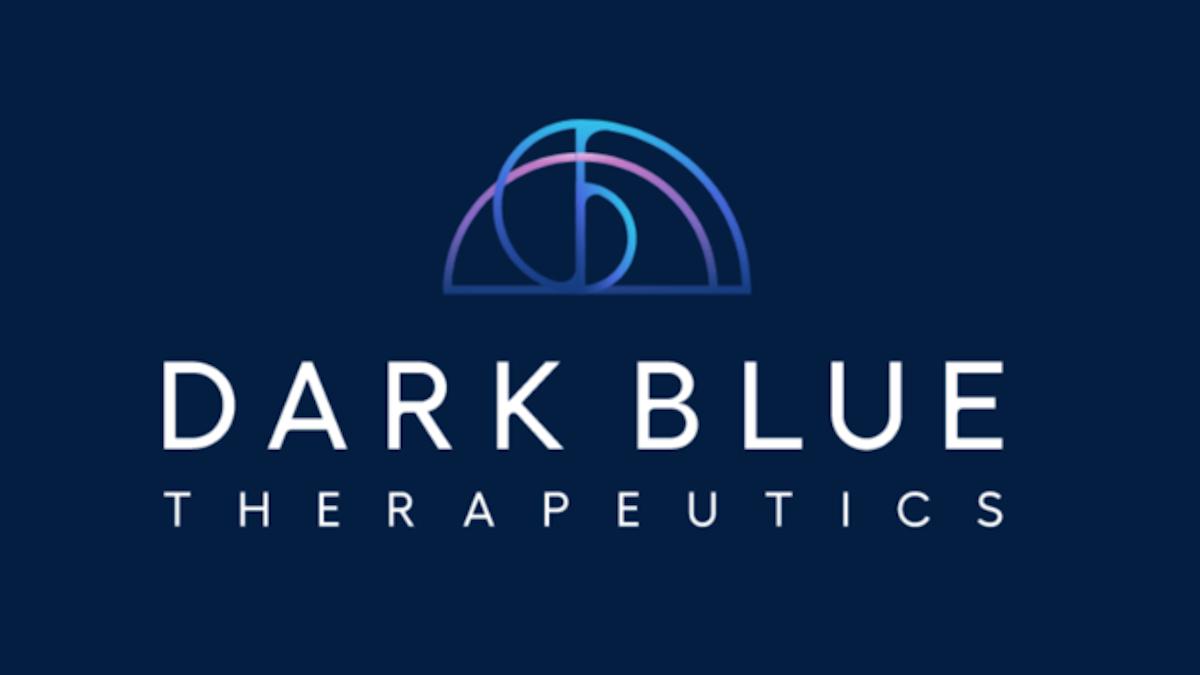Medical Informatics and Rare Disease: a bridge between two worlds

Today’s rare disease landscape comprises of around 7,000 different diseases. With a broad and diverse range of symptoms and severities impacting patients around the world, connecting these individuals with the information and expertise needed to achieve the correct diagnosis can be extremely lengthy and pose a significant barrier to treatment.
“As the severity, progress, and treatment potential of rare diseases varies from patient to patient, each condition is going to need to be addressed differently using specific expertise. And this is where modern technologies and data-driven medical informatics can really bridge the gaps in rare disease research,” said Dr Joanne Hackett, head of Genomic and Precision Medicine at IQVIA, during a recent pharmaphorum webinar.
In a panel discussion sponsored by IQVIA, Dr Hackett was joined by industry experts, including Prof Dr Holger Storf, head of the Data Integration Centre (DIC) at the University Hospital Frankfurt and lead of the Medical Informatics Group (MIG), Dennis Kadioglu, deputy head of the MIG and DIC at the University Hospital Frankfurt, Dr Josef Schepers, deputy director of the Core Unit E-Health and Interoperability within Berlin Institute of Health at Charité – Universitätsmedizin Berlin, and Michéle Zoch, research associate at the Institute for Medical Informatics and Biometry of the Medical Faculty Carl Gustav Carus, Technische Universität Dresden.
Together, the webinar panellists explored the potential of medical informatics solutions and methods in rare disease research, studies, data optimisation, and usability to overcome these challenges, all whilst maintaining compliance with data protection regulations and a patient-centric approach.
Navigating rare disease research and treatment
Due to the large number and heterogenicity of rare diseases, finding patients to achieve a minimum cohort is a significant problem. However, as Dr Storf illustrated during the webinar, sharing data through networks of experts and healthcare providers could be a potential solution to this ongoing issue.
Creating and maintaining a landscape of shared knowledge and capabilities requires the right technical solutions, such as networking, data sharing, and analysis tools, to enable it. By applying the FAIR principle (Findable, Accessible, Interoperable, and Reusable) to all resources, data will be easy to discover, query, and analyse, preserving patient’s privacy. During his presentation, Dr Storf referenced key organisations in the current Rare Disease and medical informatics environment for networking and connecting healthcare professionals, researchers, patients, and data.
In Europe, he highlighted the work of the European Joint Programme on Rare Diseases (EJP RD), an effective rare disease platform to support progress and innovation in the area of Rare Disease for patients, healthcare professionals, and researchers through sharing and bringing together resources, tools, providing training, and funding translational research to accelerate access to breakthrough treatments. Webinar participants also pointed to the EJP RD Virtual Platform – a federated ecosystem in development, which aims to bring together access to patients’ registries, genomics, and multi-omics data and knowledge sharing, as well as European Reference Networks (ERNs), which are virtual networks connecting healthcare professionals around Europe with expertise in rare diseases which allows them to discuss a patient’s diagnosis and care, with their consent.
In Germany, Dr Storf spotlighted two organisations that are facilitating connections in the Rare Disease space: SE-atlas, a large database, which helps to find experts and expert centres for a specific disease; and ACHSE, Rare Diseases Germany, which is an alliance of and for people living with rare diseases. “The major goal is to bring affected persons, relatives of affected persons, and physicians, together with experts for Rare Diseases, healthcare providers, and special patient organisations, which are very important in the context of Rare Diseases,” he explains.
Sharing data to find the right diagnosis
Currently, records captured in the healthcare settings are comprised of structured and unstructured data, which needs to be comparable or searchable. While data extraction from structured (table) format is straightforward, extraction, analysis, and processing of unstructured data (free text, pdf, reports, and hand-written notes) pose additional challenges for data interpretation and sharing.
In addition, several code systems have been in use to classify Rare Disease; nearly 500 rare diseases have a specific code in the ICD10 (10th revision of the International Statistical Classification of Diseases and Related Health Problems). Moreover, close to 3,000 rare diseases have a specific SNOMED CT code (The Systematised Nomenclature of Medicine, a systematically organised, computer-processable collection of medical terms providing codes, terms, synonyms, and definitions), and nearly 7,000 rare diseases listed on the Orphanet website have an Orpha code (a unique, time-stable and non-reusable numerical identifier designed based on Orphanet data).
Observational Medical Outcomes Partnership (OMOP) Common Data Model (CDM) was mentioned several times during the discussion. OMOP CDM is a research data repository of the open science community OHDSI (Observational Health Data Sciences and Informatics) and is a central component of the research infrastructure in the German Medical Informatics Initiative. Michéle Zoch noted that their current work focused on transferring technologies for Rare Diseases to OMOP CDM standard, by mapping Orpha Code, Alpha ID (sequential and stable identification number, which is allocated to each entry in the alphabetical index), SNOMED, ICD10-WHO, ICD10-GM (German Modification of ICD-10-WHO) to harmonise data, making it internationally accessible, searchable, and ready-available for analysis.
“We hope that by using an internationally established research data repository such as OMOP CDM, it will be easier to expand to other areas of applications too,” said Zoch. Alongside technical issues, compliance with data protection regulations, pseudo- and anonymisation of data, ethical and legal issues, patient’s consent, and local governmental policies pose additional elements that must be addressed and might differ between the countries, impacting international data sharing.
Data privacy and protection, patient voice
Data privacy is of utmost importance, and to minimise data protection concerns, privacy-preserving methods are being developed, including secured multi-party computation, data shield, and others. It is essential that patient consent is obtained before their data can be used for research (and re-contacting) purposes.
What is equally important, according to the webinar speakers, is that patients should be informed in accessible language about what is going to happen with their data, how it can be used, what research successes have been achieved using patients’ data in the past, and what is possible in the future. Dr Schepers noted that patients and patient groups are presented with opportunities to build and curate their own registries and they are getting support and training from the researchers on this initiative, which is a big part of the Collaboration on Rare Disease together with ACHSE (the Alliance of Chronic Rare Diseases).
Creating connections and opportunities with medical informatics
As panellists emphasised throughout the event, access to standardised data and specialised expertise is particularly valuable in matching patients with the right specialist to achieve the correct diagnosis in a timely manner and enable early treatment. “It is difficult to do research on over 6,000 different rare diseases because they are heterogeneous and need very specific data,” noted Kadioglu.
“We need networks of healthcare providers that can share that data, but we also need methods and tools to recruit patients for that research.” A very important question was raised by the webinar attendee of the diversity and inclusion of patients in clinical research, and Dr Hackett commented: “A lot of the work has been done in our Paediatric & Rare Disease network, as well as our Cell and Gene Therapy network, we are tackling the issue of diversity in data. It is a forefront of the work that we are doing at IQVIA.”
For Storf, facilitating connections is an important goal of medical informatics, as the act of finding the right information or expertise is a vital step in achieving a diagnosis.
About the panel
 Holger Storf heads the Data Integration Centre (DIC) at the University Hospital Frankfurt and leads the Medical Informatics Group (MIG) since November 2015. Additionally, he is the Co-PI for Frankfurt of the MIRACUM-Consortium, funded in the German Medical Informatics Initiative and project leader of different national and EU-wide Rare Disease Registry-Projects and Dr. Storf continues coordinating the technical activities of the OSSE-project (Open Source Registry System for Rare Diseases).
Holger Storf heads the Data Integration Centre (DIC) at the University Hospital Frankfurt and leads the Medical Informatics Group (MIG) since November 2015. Additionally, he is the Co-PI for Frankfurt of the MIRACUM-Consortium, funded in the German Medical Informatics Initiative and project leader of different national and EU-wide Rare Disease Registry-Projects and Dr. Storf continues coordinating the technical activities of the OSSE-project (Open Source Registry System for Rare Diseases).
 Dennis Kadioglu is the deputy head of both the Medical Informatics Group (MIG) and the Data Integration Center (DIC) at the University Hospital Frankfurt in Frankfurt am Main. His research focuses on the development of methods for improving the exploitation and integration of medical routine and research data for answering subordinate questions. He is known for the ongoing development and application of the software solution Data Element Hub (DEHub), which as a Metadata Repository holds reusable specifications about the data elements of a data set. In this field he contributes to various research projects like MIRACUM (funded in the German Medical Informatics Initiative by the German Ministry of Education and Research) and EJP-RD (funded in Horizon 2020 by the European Union) focusing on the development of adequate IT support to foster collaboration in medical research.
Dennis Kadioglu is the deputy head of both the Medical Informatics Group (MIG) and the Data Integration Center (DIC) at the University Hospital Frankfurt in Frankfurt am Main. His research focuses on the development of methods for improving the exploitation and integration of medical routine and research data for answering subordinate questions. He is known for the ongoing development and application of the software solution Data Element Hub (DEHub), which as a Metadata Repository holds reusable specifications about the data elements of a data set. In this field he contributes to various research projects like MIRACUM (funded in the German Medical Informatics Initiative by the German Ministry of Education and Research) and EJP-RD (funded in Horizon 2020 by the European Union) focusing on the development of adequate IT support to foster collaboration in medical research.
 Josef Schepers is deputy director of the Core Unit E-Health and Interoperability within Berlin Institute of Health at Charité – Universitätsmedizin Berlin. In 2019 with others, he designed and since 2020 he coordinates the network “Collaboration on Rare Diseases” (CORD-MI) within the Medical Informatics Initiative of the German Federal Ministry of Education and Research. Twenty university hospitals participate in CORD-MI to make Rare Diseases visible and open up opportunities for care and research.
Josef Schepers is deputy director of the Core Unit E-Health and Interoperability within Berlin Institute of Health at Charité – Universitätsmedizin Berlin. In 2019 with others, he designed and since 2020 he coordinates the network “Collaboration on Rare Diseases” (CORD-MI) within the Medical Informatics Initiative of the German Federal Ministry of Education and Research. Twenty university hospitals participate in CORD-MI to make Rare Diseases visible and open up opportunities for care and research.
 Michéle Zoch is research associate at the Institute for Medical Informatics and Biometry of the Medical Faculty Carl Gustav Carus, Technische Universität Dresden. Thus, she belongs to the Center for Medical Informatics at the University Medicine Dresden. Her research area is the secondary use of observational data of patients with rare and unclear diseases; with attention to the research data infrastructure and terminologies. She collaborated in projects like BIDA-SE (“Possible Uses and Clinical Benefits of Big Data Applications for Rare Diseases”), CORD-MI (“Collaboration for Rare Diseases”) and SATURN (“Smart Doctor Portal for Patients with Unclear Diagnosis”). In 2021, she co-founded OHDSI Germany, which is as a national node of the Observational Health Data Sciences and Informatics (OHDSI) Europe.
Michéle Zoch is research associate at the Institute for Medical Informatics and Biometry of the Medical Faculty Carl Gustav Carus, Technische Universität Dresden. Thus, she belongs to the Center for Medical Informatics at the University Medicine Dresden. Her research area is the secondary use of observational data of patients with rare and unclear diseases; with attention to the research data infrastructure and terminologies. She collaborated in projects like BIDA-SE (“Possible Uses and Clinical Benefits of Big Data Applications for Rare Diseases”), CORD-MI (“Collaboration for Rare Diseases”) and SATURN (“Smart Doctor Portal for Patients with Unclear Diagnosis”). In 2021, she co-founded OHDSI Germany, which is as a national node of the Observational Health Data Sciences and Informatics (OHDSI) Europe.
 Joanne Hackett (chair) is the head of genomic and precision medicine at IQVIA and previously was the chief commercial officer at Genomics England. Dr Hackett is a clinical academic, entrepreneur, investor, and a strategic, creative visionair with global experience spanning successful start-ups to Fortune 500 companies. Joanne is known for building innovation, driving personalised medicine and leading through fast paced, complex changing ecosystems and integrations. Joanne’s goal is to contribute in bringing the world novel, cost effective and simple health care solutions, and she is particularly keen on building the case for prevention, open science and citizen genomics. Joanne has been publicly recognised for her relentless pursuit of revolutionising healthcare and has been named one of the top six Influential Leaders in Healthcare by CIO Look, the Accenture Life Science Leader of the year, Freshfields Top 100 Most Influential Women, One HealthTech Top 70 Women in the NHS, Pharmaceutical Market Europe’s 30 women leaders in UK healthcare and BioBeat Top 50 Women in Biotech Award.
Joanne Hackett (chair) is the head of genomic and precision medicine at IQVIA and previously was the chief commercial officer at Genomics England. Dr Hackett is a clinical academic, entrepreneur, investor, and a strategic, creative visionair with global experience spanning successful start-ups to Fortune 500 companies. Joanne is known for building innovation, driving personalised medicine and leading through fast paced, complex changing ecosystems and integrations. Joanne’s goal is to contribute in bringing the world novel, cost effective and simple health care solutions, and she is particularly keen on building the case for prevention, open science and citizen genomics. Joanne has been publicly recognised for her relentless pursuit of revolutionising healthcare and has been named one of the top six Influential Leaders in Healthcare by CIO Look, the Accenture Life Science Leader of the year, Freshfields Top 100 Most Influential Women, One HealthTech Top 70 Women in the NHS, Pharmaceutical Market Europe’s 30 women leaders in UK healthcare and BioBeat Top 50 Women in Biotech Award.












